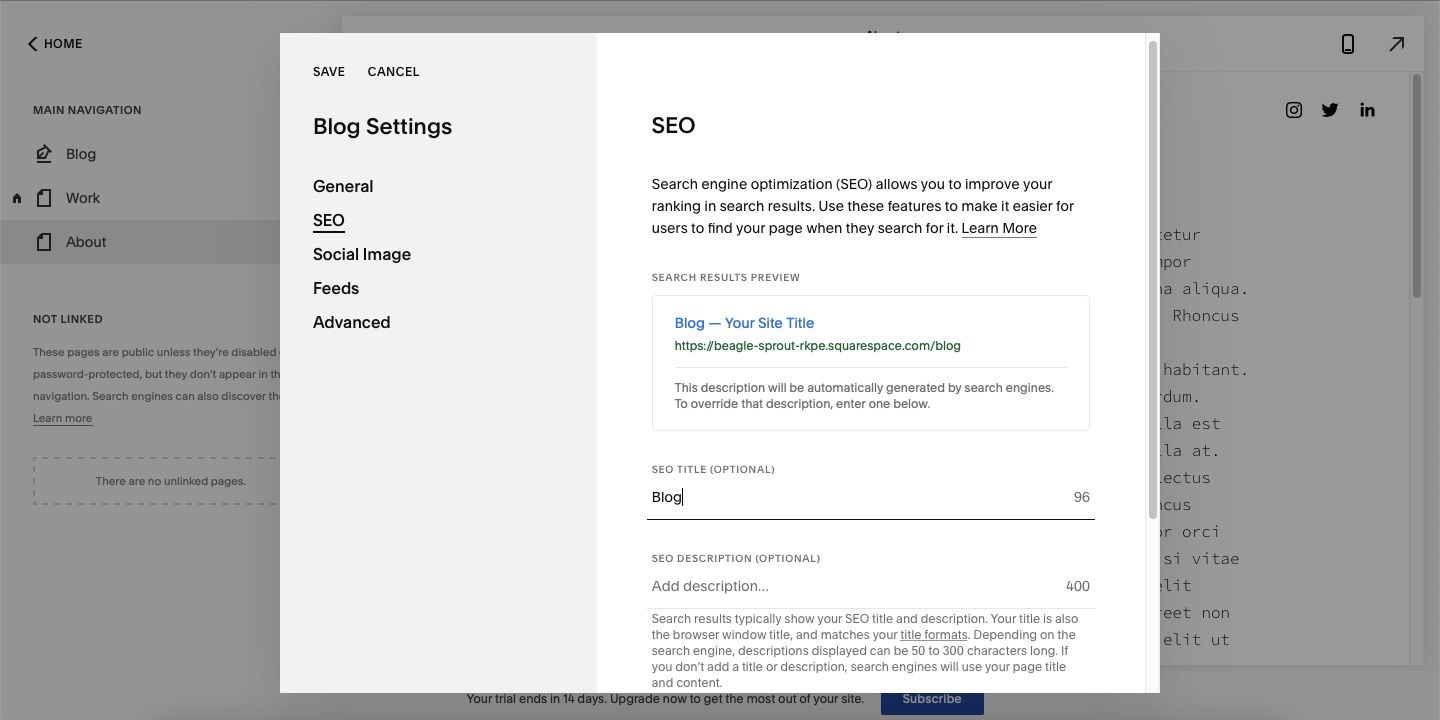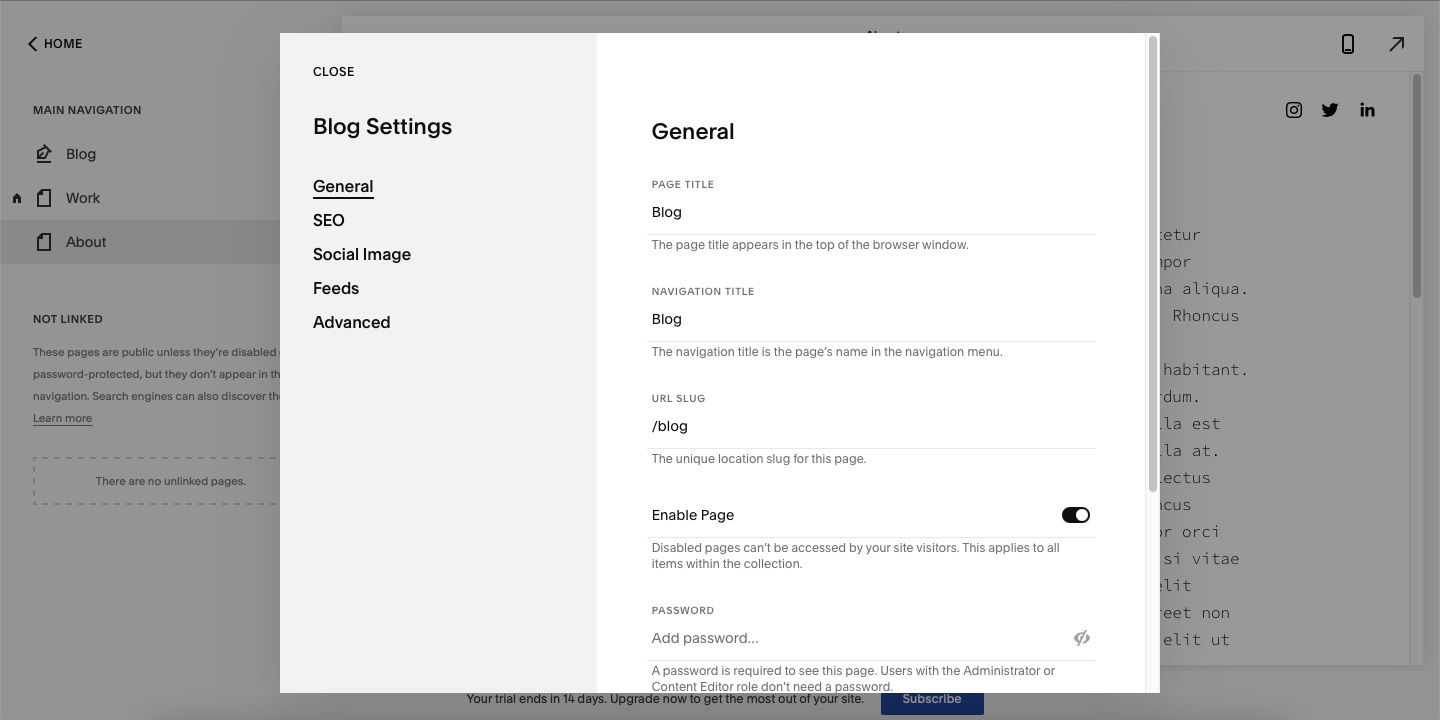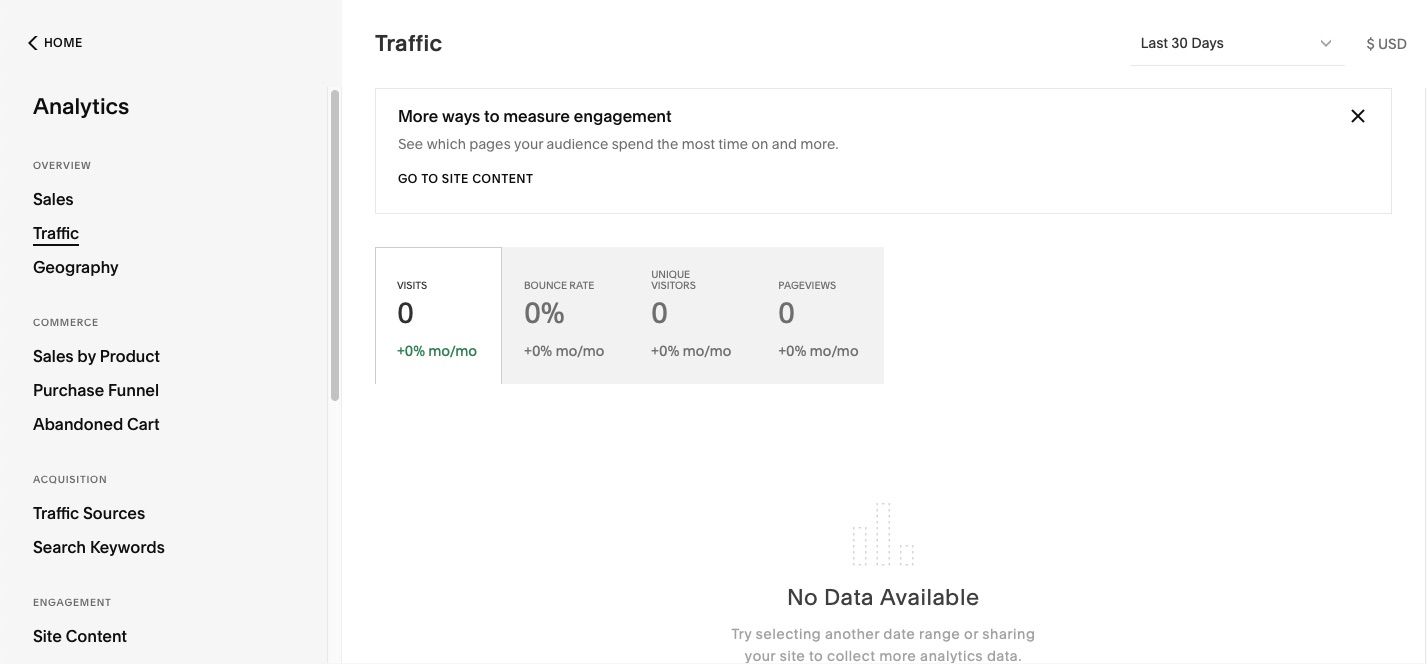When creating a website, you’ll often find comparison articles between three of the leading builders: Squarespace, Wix, and WordPress. And when you research Squarespace, you’ll most likely find yourself drawn to the beautiful and clean templates at your disposal.
Many online users have a misconception that using Squarespace will harm your search engine optimization (SEO) rankings. However, this isn’t necessarily true; much of your website’s success will come down to how you manage it.
In this article, you’ll discover seven ways to rank higher on Search Engine Results Pages (SERPs) using a Squarespace website.
Mix Up Your Media
Beginners in SEO will quickly learn about how to rank highly in search engines with the power of words. Using keywords is one of the oldest practices to achieve this, but nowadays, it’s a good idea to mix up the media on your website.
Since Squarespace designs its templates with aesthetics in mind, including images is a must. Consider embedding YouTube videos or adding native ones. Make sure your file sizes aren’t too big, though, as this can impact your site performance (which will negatively impact your SEO rankings).
Besides directly impacting SEO rankings, including visuals can also lower your bounce rate—which is a measure of how many users land on your site and leave without exploring further. As users spend more time online, your site will become visible to more of your target audience.
Add SEO Titles & Descriptions
In addition to optimizing the text on your website pages and in blog posts, you can further increase your chances of ranking in search engines by adding customized SEO titles and descriptions.
When writing your titles and descriptions, it’s a good idea to think about the type of content you’re likely to engage with on search engines. Ask yourself:
- Do my title and description capture the reader’s attention?
- Can they see a clear reason to click on my page and not someone else’s?
- Am I going to answer their question and not damage their trust by misleading them?
Once you’ve answered the questions above, you’re ready to optimize your pages and blog posts. Follow the steps below to do this.
- Click on the cog icon next to the page you want to edit.
- Select SEO from the menu on the left.
- Enter your SEO title and description.
- Once you’ve done both of these, click on CLOSE in the top left-hand corner of the window.
Customize Your URL Slugs
When publishing content on your Squarespace website, it’s a good idea to make sure that you don’t leave your URL slugs as their default names. While these might work in some instances, they’re often either too long or don’t explain what the page does properly.
The slug is the bit you see at the end of a link to a specific page. For example, an article called “10 Ways to Improve Voice Search Rankings” might have a slug of “how-to-improve-voice-search-results”.
Customizing your URL slugs with a Squarespace website doesn’t take much effort. To do this, you’ll need to click on the cog icon next to a page again. But instead of clicking on SEO, go to General.
In the General tab, you’ll see a subsection called URL SLUG. Under this, write your custom slug and close the window once you’re finished.
Change Your Page Titles
When creating pages on their new website, many users keep their page titles pretty basic. “About”, “Home”—you get the picture. But the problem is that millions of websites exist with those titles, so you’re not going to stand out on that alone.
One creative solution to this is to tweak your page titles. For example, instead of “Home”, you could change your homepage to “Seattle-Based Graphic Designer”.
To change your page titles on Squarespace, you’ll need to go into the General window again. At the top, you’ll see an option called PAGE TITLE; change your page’s name here.
If you don’t want this to show up on your website toolbar, don’t worry—you can still have “Home”, “About”, and so on as your menu names. All you need to do is change the navigation title in the option beneath the page title choice.
Create Consistent, High-Quality Content
As Squarespace says in its SEO checklist:
“All Squarespace sites are built for clean indexing by search engines, but the content you add to your site and how you present it plays a big role in how easily people are able to find you.”
Even if you perform all of the best SEO practices, you’re not going to build a loyal following if your content doesn’t give them a reason to return.
Ideally, your website will have a blog. You can use this to demonstrate your expertise and should try to commit to at least one well-curated post per week.
But even if you choose not to blog, you’ll still need to keep your other pages up to date. Go through each page regularly, refresh the content to improve your positioning, and tweak your URLs and titles based on up-to-date keyword research.
Use the Analytics Available
Like you would if you had chosen to rank higher on SERPs with WordPress instead, one of the best ways to improve your visibility is through analytics. Squarespace has a comprehensive analytics platform, which allows you to break down your statistics into several subcategories.
Some of the data segments you can measure with Squarespace include:
- Traffic sources
- Exit rate
- Form submissions
You can also get better keyword insights by connecting Google Search Console with your Squarespace website. To do this, Go to Analytics > Traffic Sources. There, you’ll need to connect your Google account with your website.
Once you’ve connected your Squarespace website with Google Search Console, keep in mind that you might need to wait up to 72 hours for your page to get indexed.
Think Outside the Box
While you can improve your Squarespace site's SEO in several direct ways, it’s also worth thinking a little outside the box. These days, we’ve got access to multiple mini-search engines of their own: social media platforms.
Sharing your article on LinkedIn, Twitter, and even YouTube can increase the number of visitors to your website. If you’ve created the content they’re looking for, they’ll likely stick around—and come back—which will tell Google and co. that your website is worth ranking higher.
Can You Rank Highly on SERPs With Squarespace? In Short, Yes
Having read this article, you should now have a better idea of improving your SEO rankings with Squarespace. Doing so isn’t as difficult as many users will have you believe, and the principles remain the same as on other platforms—maximize your user experience.
Optimize your pages, answer users’ questions, and create consistent content that engages them. If you do all of these and stick with things for the long run, you’ll improve the searchability of your Squarespace site.





